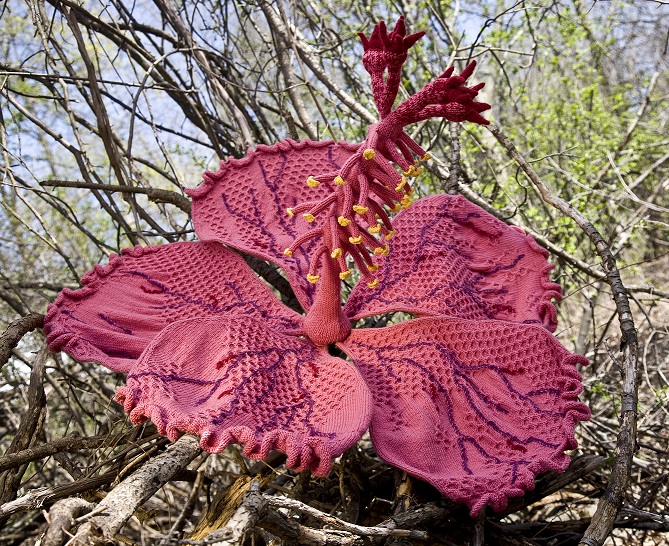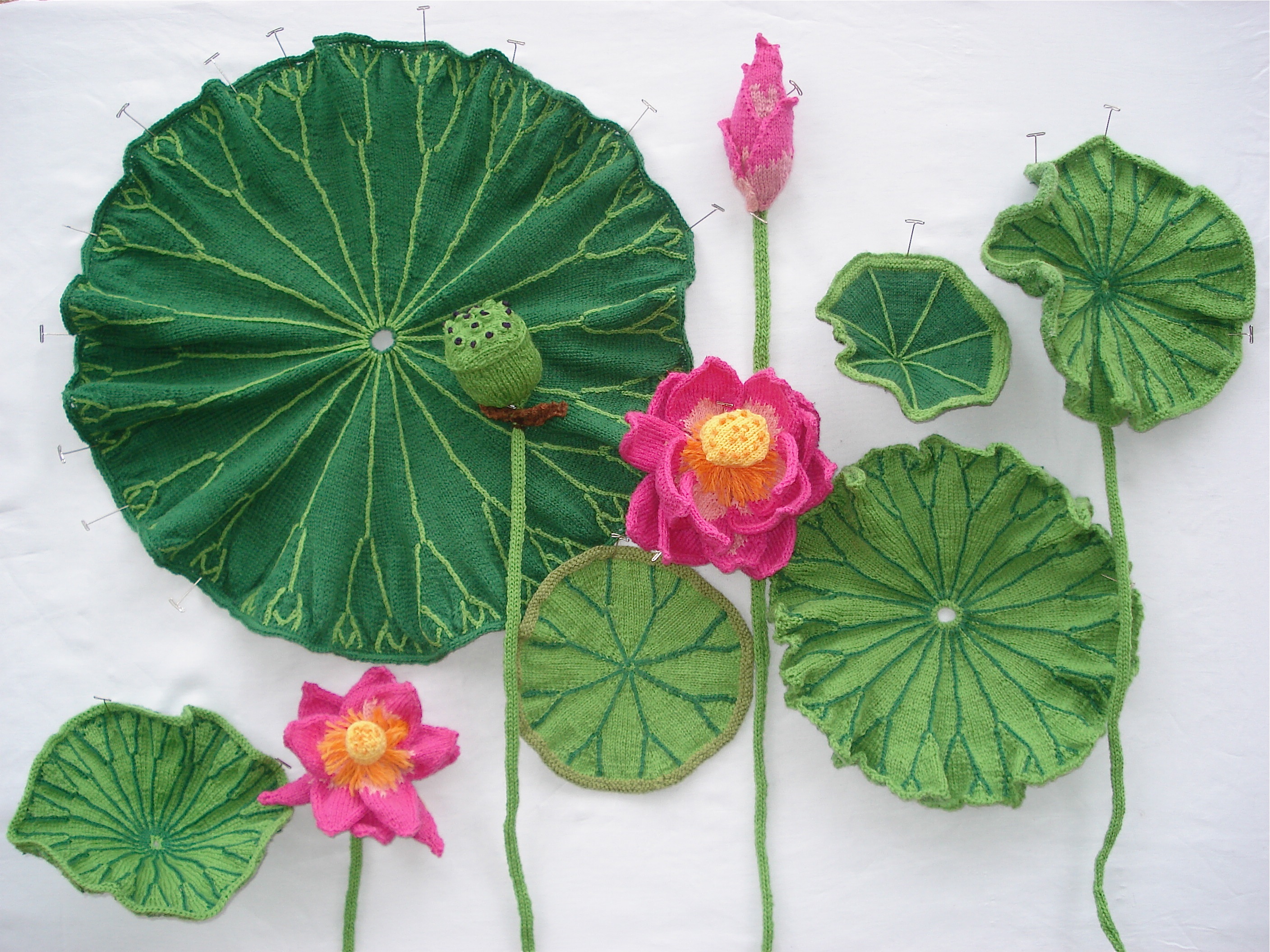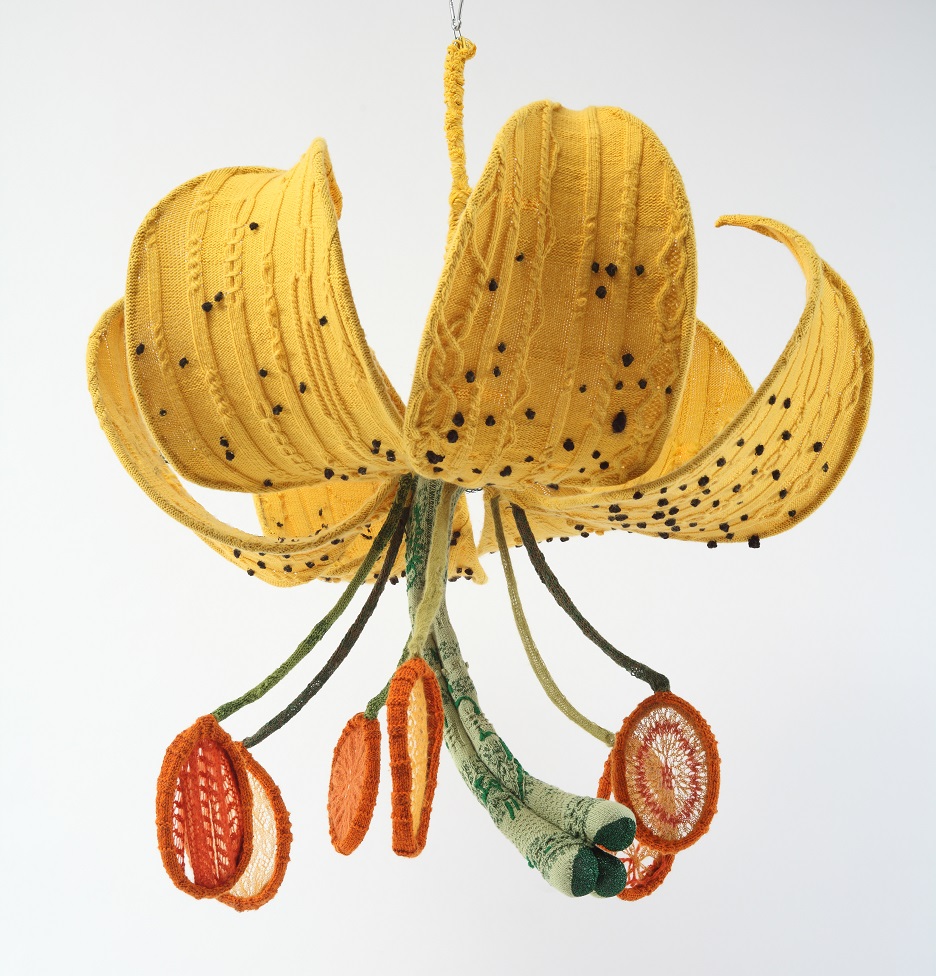I’m always excited to see knitting incorporated into any art exhibit, even if it’s just one piece in a collection. So when I saw the images from Brooklyn Botanic Garden’s current Knit, Purl, Sow exhibit, an entire exhibit devoted to knitting, I let out a little squeal that would rival a toddler on Christmas morning.
If you can get to New York City, plan a visit to Brooklyn Botanic Garden, but hurry because the exhibit closes on January 22nd! For everyone else, here’s a little peek of just a few of the pieces in the exhibit, along with some details about their incredible artists.

Tatyana Yanishevsky, Anatomically Correct Hibiscus, 2013. Knitted yarn. Photo by Megan Jones, courtesy of Brooklyn Botanic Garden.
“Knit, Purl, Sow” is a collection of botany — some very realistic and others abstract — in knitted form. Some of the work in the exhibit is absolutely scientifically accurate. Flowers have pistons and stamens (remember those words from elementary school?) all knitted with yarn. “Knit, Purl, Sow” isn’t a traditional exhibit with framed pieces placed perfectly on the wall. In fact, some of these flowers aren’t even near on a wall. They’re all 3-D, and some of them even hang from the ceiling.
The Artists
Three fiber artists — Tatyana Yanishevsky, Ruth Marshall and Santiago Venegas — contribute to the exhibit.
Tatyana Yanishevsky‘s work, like the hibiscus pictured above, features every single part of the flower. And Yanishevsky knows her flowers; she has been trained as a biologist! Take a closer look at all the details on the hibiscus. Can you imagine the patience it took to not only complete the flower, but also ensure it was scientifically accurate?
Ruth Marshall, Lotus, 2013. Knitted, crocheted, and embroidered yarn, wire, fabric stiffener, fiber, and pins. Photo by the artist, courtesy of Brooklyn Botanic Garden.
Ruth Marshall, creator of the life-size lotus shown above, is most famous for creating full-size knitted pelts of endangered animals. Most of Marshall’s work relates to conservation, and you’ll see her interpreting everything from reptiles to flowers and even some of her native Australia’s animals in her knitting.Santiago Venegas, an explorer of the relationship between textiles and their environmental impact, contributes a beautiful sweater to the exhibit. If you’re a fan of Lion Brand, you may recognize Venegas’s name from last year’s “Yarn is Art” Lion Brand fashion show, where he contributed another amazing sweater.

Tatyana Yanishevsky, Tiger Lily, 2011. Knitted yarn and steel. Photo by Karen Philippi, courtesy of Brooklyn Botanic Garden.
The artists use texture and a variety of stitches to represent the different plant parts. You’ll see nearly every knitting technique at work in the exhibit: in-the-round knitting, lace knitting, stockinette stitch. And it’s clear there’s no shortage of cables. Just check out Yanishevsky’s Tiger Lily. I took one look at those petals and immediately tried to figure out how to turn it into a shawl!
You can find out more about the “Knit, Purl, Sow” exhibit, or visit the Brooklyn Botanic Garden before January 22nd to see the exhibit in person.
Feeling inspired by all these gorgeous knitted flowers? Don’t miss Bluprint’s Flower of the Month series, offering up a different knit or crochet flower each month. Check out January’s knitted and crocheted carnations, and be sure to check back each month for a new flower.

Share tips, start a discussion or ask one of our experts or other students a question.
No Responses to “Knit, Purl, Sow's Anatomically Correct Knitted Botanics”